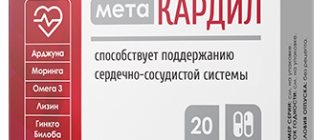08.08.2017
Last modified: April 14, 2021 at 05:45 pm
Upon reaching 35 years of age, women and men often experience a disease such as hypertension. To maintain health and reduce the likelihood of hypertensive attacks, experts recommend limiting strength training, following a diet, and avoiding many medications.
Since ancient times, we have loved to steam in steam rooms, considering this procedure to be healing and rejuvenating. Therefore, patients suffering from hypertension are tormented by the question: does visiting a bathhouse increase or decrease blood pressure? Let's figure out whether high temperature can really provoke deterioration of well-being and fainting in hypertensive patients and how this affects the cardiovascular system.
The healing effect of a bath on the body
Hot air and therapeutic fumes have a complex effect on the organs and systems of the body. In addition to improving the condition of the skin and the functioning of the heart muscle, the increased temperature in the bathhouse normalizes the condition of the nervous system, has a beneficial effect on the functioning of the stomach and intestines, strengthening overall health and reducing the risk of developing chronic diseases.
The effect of the bath on the heart and blood vessels
- The blood vessels dilate. The resistance of the vascular walls decreases, blood supply improves. This process helps lower blood pressure.
- The frequency of contractions of the heart muscle increases. Heart rate reaches 140 – 170 beats per minute. There is an increase in the speed of blood flow, which is the prevention of congestion.
- Diastolic pressure after a bath decreases, and systolic pressure increases.
- The elasticity of blood vessels increases. The effect of high temperatures on blood vessels is a kind of gymnastics. The vascular walls are strengthened, which reduces the risk of stroke or heart attack.
The effect of the sauna on the nervous system
The central nervous system reacts differently to exposure to heat. It depends on the length of stay in the steam room. So, if a person steams for no more than 10 minutes, then the following changes are observed:
- light perception of the eyes improves (increased sensitivity to bright light disappears);
- motor response to light and sound stimuli increases;
- there is an improvement in the accuracy of movements;
- sleep and concentration are normalized.
If a person spends 20 or 30 minutes in a steam room, the condition of the central nervous system worsens and the functioning of the musculoskeletal system is disrupted.
Effects of heat on the respiratory system
During the bath procedure, alveolar air is exchanged, which is directly related to improved thermoregulation of the body. Due to the increase in frequency and deepening of breathing, lung capacity increases. Normalization or a slight drop in pressure is observed.
Important! The greatest benefit from therapeutic inhalations can be obtained in a bathhouse. Medicinal substances enter the deep parts of the lungs, which enhances the therapeutic effect.
If a patient is diagnosed with rhinitis and swelling of the nasal mucosa, a therapeutic bath procedure will have a drying effect, which will contribute to a quick recovery.
Impact on the muscular system
In this case:
- coordination of movements improves;
- the amount of energy expended decreases;
- muscles are enriched with oxygen;
- recovery processes are normalized.
Don't forget that steam has a positive effect on the skin. The pores expand, which leads to the effective removal of toxins and dirt. Blood flow helps saturate the epithelium with oxygen, due to which the skin rejuvenates and becomes elastic.
Important information: What is binge drinking and why is it dangerous?
The therapeutic effect of the bath reaches all organs and systems of the body, strengthening it, increasing the performance and activity of the brain.
The benefits of the procedure for the body as a whole
Before answering the question of whether it is possible to go to the bathhouse with hypertension, you need to list the beneficial properties of the procedure. They are shown in the table below.
| Benefits for the skin | The skin is cleansed of toxins and toxic substances, the body becomes more elastic |
| Effect on the nervous system | The bath promotes relaxation, helps get rid of anxiety and irritability |
| Effect on blood vessels | Thanks to alternating temperatures, the strength of blood vessels increases noticeably, and the heart muscle strengthens |
| Impact on protein metabolism | Bath helps improve metabolism |
The procedure helps normalize sleep. After visiting the steam room, hormonal levels improve.
Is it possible to go to the bathhouse if you have hypertension?
Many patients note the negative effects of baths with high blood pressure. The complaints are as follows:
- it gets dark before my eyes;
- there is a buzzing in the ears;
- patients faint;
- a hypertensive crisis occurs.
Therefore, the myth about the dangers of elevated temperatures during hypertension has taken root in people’s minds. However, all negative manifestations are associated only with the fact that people do not know how to properly steam in saunas with high blood pressure.
Of course, it is strictly forbidden to go to the sauna when your blood pressure is high. To obtain a therapeutic effect from bath procedures, you should wait until the pressure normalizes to 140/90.
Important! If your blood pressure is high, take antihypertensive medications and wait until your blood pressure drops to normal levels. Only after this you can take a steam bath in the steam room.
If your blood pressure rises due to nervous strain or as a result of stressful situations, you do not need to resort to taking medications to normalize the condition: you can go to the bathhouse without any fear for your health. On the contrary, exposure to high temperatures will help strengthen the cardiovascular system, which will avoid hypertension during or after another emotional outburst.
If the patient is diagnosed with hypertension of the second or even third stage, then the bath should be abandoned. If the desire to wash in the bathhouse does not fade, then you should remember a simple rule: you should not stay in the bathhouse for more than 15 minutes and it is strictly forbidden to enter the steam room.
Hypertension and sauna
For hypertension, a sauna is a more gentle procedure. The load on the heart and blood vessels is significantly lower, the heart rate is not higher than 120 beats per minute, therefore, no physical disturbances should be observed. Despite the relative safety of saunas, hypertensive patients should follow some rules:
- Before visiting the steam room, you should consult your doctor.
- It is contraindicated to go to the sauna during exacerbations.
- At the initial stage, procedures should not exceed 10 minutes in duration. Then the time can be increased, but it is recommended to do this in batches. This will help the body adapt and accept high temperatures more easily.
- Before the procedure, it is recommended to drink diaphoretic drinks.
- At the first deterioration in your health, you must immediately leave the steam room.
- You should not take contrast procedures, including cold showers.
- It is contraindicated to take alcoholic and energy drinks, especially in a sauna or steam bath.
How to properly take a steam bath if your blood pressure is higher than normal
It is very important to steam in case of hypertension in a cooled bath in dry air. To avoid an increase in blood pressure and achieve a calming effect, you can steam a broom made of oak branches.
Important! Closely monitor your heart rate, shortness of breath, and general well-being. If it becomes bad, stop the procedure immediately.
It is permissible to warm up in the steam room for no more than 5 minutes. To prevent an increase in pressure, you should take a horizontal body position. In between visits to the steam room, you are allowed to rinse with water, but the water should not be ice-cold.
The number of trips to the steam room can vary from 3 to 5. It is imperative to observe time intervals.
Experts recommend the following time intervals:
- first approach - no more than 2 - 3 minutes;
- second approach - no more than 4 minutes;
- third run - 5 - 7 minutes;
- fourth approach - 7 - 10 minutes;
- fifth run - 2–3 min.
It is strictly forbidden for hypertensive patients to jump into a pool of cold water or run out into the cold. These actions put a strain on the cardiovascular system, which can cause increased heart rate and acute pain in the heart area.
It is important to drink hot linden tea in a bathhouse or sauna. Drinking plenty of fluids will help the body maintain thermoregulation. Don’t forget to cover your head with a hat and your body with a terry towel.
To protect yourself from the consequences, you can go to the steam room accompanied by friends or relatives, who will come to the rescue at any time.
Attention! Do not forget to take antihypertensive medications with you to relieve an attack.
For hypertensive patients, it is important to maintain the ratio of humidity and air temperature. If air humidity exceeds 80%, then the maximum permissible temperature is 50 °C. At a humidity of 15%, heating can be increased to 90 °C.
After steaming, to normalize your pulse and general condition, you need to lie down for 20–30 minutes. Only after such a rest can you repeat the warm-up in the steam room.
Important information: Effective withdrawal from binge drinking and the cost of the service
We make decisions wisely
You should not follow prejudices and completely limit yourself from taking a steam bath in your favorite bathhouse, and it is better to go to the steam room regularly, especially in young and middle age. At the same time, it is not worth exposing your body to additional loads and stress in old age or in the presence of serious cardiac pathology.
Visit the bathhouse and harden your own vessels at a young age, and then you can protect yourself from serious illnesses and visit your favorite steam room until you are very old!
Rules for preparing for a bath day
To avoid negative manifestations during the procedure and get the maximum benefit from visiting a bathhouse or sauna, the following rules should be followed:
- Before performing bath procedures, you should definitely consult with your doctor at the clinic. It is advisable to take a blood sugar test. If the permissible amount of sugar is increased, then you will have to temporarily abandon the bath.
- The day before visiting a Russian bath or sauna, you must limit your alcohol consumption. It is especially inappropriate to drink alcohol-containing drinks directly in the bathhouse.
- Avoid eating fatty and salty foods before the procedure. 3 hours before visiting the bathhouse, you can eat a small portion of vegetable salad or 200 grams of cottage cheese.
- At home, apply a rich cream to the surface of the skin - this will protect the epidermis from overheating and moisture evaporation.
- To reduce the risk of increased intracranial pressure, you should not wash your hair before visiting the bath. A little greasiness will prevent heat stroke.
Follow the above recommendations and you can protect yourself from attacks of hypertension while relaxing in the bathhouse.
Important! When the air humidity in the steam room is high, the heart rate should not exceed 160 beats per minute.
Contraindications
The sauna has a beneficial effect, but sometimes the procedures can cause irreparable harm to health. People suffering from hypertension are contraindicated from visiting the sauna:
- At stage 3 of the disease.
- If high blood pressure persists for many years.
- If there is a tendency to a sharp increase in blood pressure (hypertensive crisis).
- For heart diseases accompanied by any complications.
- In the presence of vascular diseases.
- During the period of exacerbation of chronic diseases.
- For acute viral and respiratory diseases.
- If your body temperature is elevated.
Important: before going to the sauna, you must consult a doctor and listen to his advice so as not to harm your health.
The pressure in the bathhouse has risen sharply - what to do?
If suddenly while visiting the bathhouse a person begins to feel unwell and signs of a hypertensive crisis appear, the patient should immediately be taken out into the fresh air.
The first signs of a hypertensive crisis in the bath:
- throbbing pain appears in the back of the head;
- dizziness;
- weakness and trembling of body muscles;
- feeling of heat;
- darkening of the eyes;
- noise in ears;
- significant increase in heart rate;
- feeling of pain and heaviness in the heart area;
- lack of air;
- nausea or vomiting.
If the condition does not improve in the fresh air, you must call an ambulance or the medical staff of the bathhouse (if there is a full-time doctor).
The patient should be placed with pillows under his head and legs, which will facilitate the breathing process. Do not change body position or lift the person. Care must be taken to take an antihypertensive drug.
Drugs that will help lower the numbers and stop arterial hypertension include:
- Captopril;
- Clonidine;
- Angiopril-25;
- Kapoten;
- Capozide.
Important! When exposed to these drugs, blood pressure can drop quickly, so two tablets is the maximum permissible single dose.
If severe headaches occur, the person should be given a diuretic:
- Furosemide;
- Indapamide;
- Indap;
- Acripamide;
- Ionic.
If the patient complains of pain in the heart and shortness of breath, then you need to put a Nitroglycerin tablet under the tongue or drop 20 - 40 drops of Valocordin, Valoserdin or Corvalol into a glass of water.
Often, increased blood pressure in a person causes nosebleeds. To stop bleeding, apply an ice pack to the bridge of your nose.
Impact on the muscular system
The last important aspect of how a bath affects blood pressure is its effect on the muscles. During the steaming period, a number of positive effects occur:
- the quality of coordination improves;
- the energy intensity of actions is reduced;
- the muscles are provided with abundant oxygen supply;
- The bath helps eliminate inflammatory reactions.
An additional benefit is a positive effect on the skin. Heat leads to the opening of pores, and moisture eliminates impurities and toxins. Due to high-quality blood circulation, the epithelium is saturated with oxygen, this starts the rejuvenation process. Externally, the skin acquires increased elasticity.
The therapeutic effect of the bath occurs in most organs and systems of the body, but it is worth considering that there are a number of contraindications to the procedure. The bath has a negative effect on increased intracranial pressure, since due to the acceleration of blood flow and abundant blood flow to the brain, it increases the pressure in the cranial cavity.
When a bath is contraindicated
There are a number of restrictions when people with hypertension are contraindicated from visiting a sauna or bathhouse:
- the disease has progressed to the second or third degree;
- with systematically high blood pressure levels, which are difficult to normalize with tablet form of medications;
- in case of hypertensive crises;
- when there are deviations in the functioning of the heart muscle;
- for diseases affecting blood vessels;
- in case of progression of chronic diseases;
- in the presence of a viral infection in the body;
- in case of elevated body temperature;
- when high blood pressure is recorded before visiting the bathhouse - more than 145/130 mmHg;
- when low blood pressure is diagnosed - 100/50 mmHg;
- in case of recent myocardial infarction or stroke;
- with regular nosebleeds;
- during menstruation.
Important! Contraindications should not be neglected. A negligent attitude towards one's health can aggravate the course of the disease and lead to serious consequences, including death.
Prohibition on bathing procedures at high blood pressure
The pressure after a bath usually normalizes after 15–20 minutes. At the same time, it is not recommended to visit the steam room for people with hypertension of the third and fourth degree.
It is forbidden to visit the bathhouse if you have hypertension, which is accompanied by vegetative-vascular dystonia. The procedure is contraindicated if there is a history of stroke or heart attack. It is forbidden to visit the bathhouse during a hypertensive crisis.
Patients with stage 3 hypertension or uncontrolled disease are prohibited from visiting the steam room.
It is recommended to refuse a visit to the steam room if the following unfavorable symptoms appear:
- severe headaches;
- cardiopalmus;
- the appearance of black dots before the eyes;
- drowsiness;
- severe swelling of the face;
- the appearance of a feeling of numbness in the fingers;
- chills;
- decreased clarity of vision.
If your condition worsens (vomiting, severe headache, nausea), you should immediately seek medical help.
No ads 1









